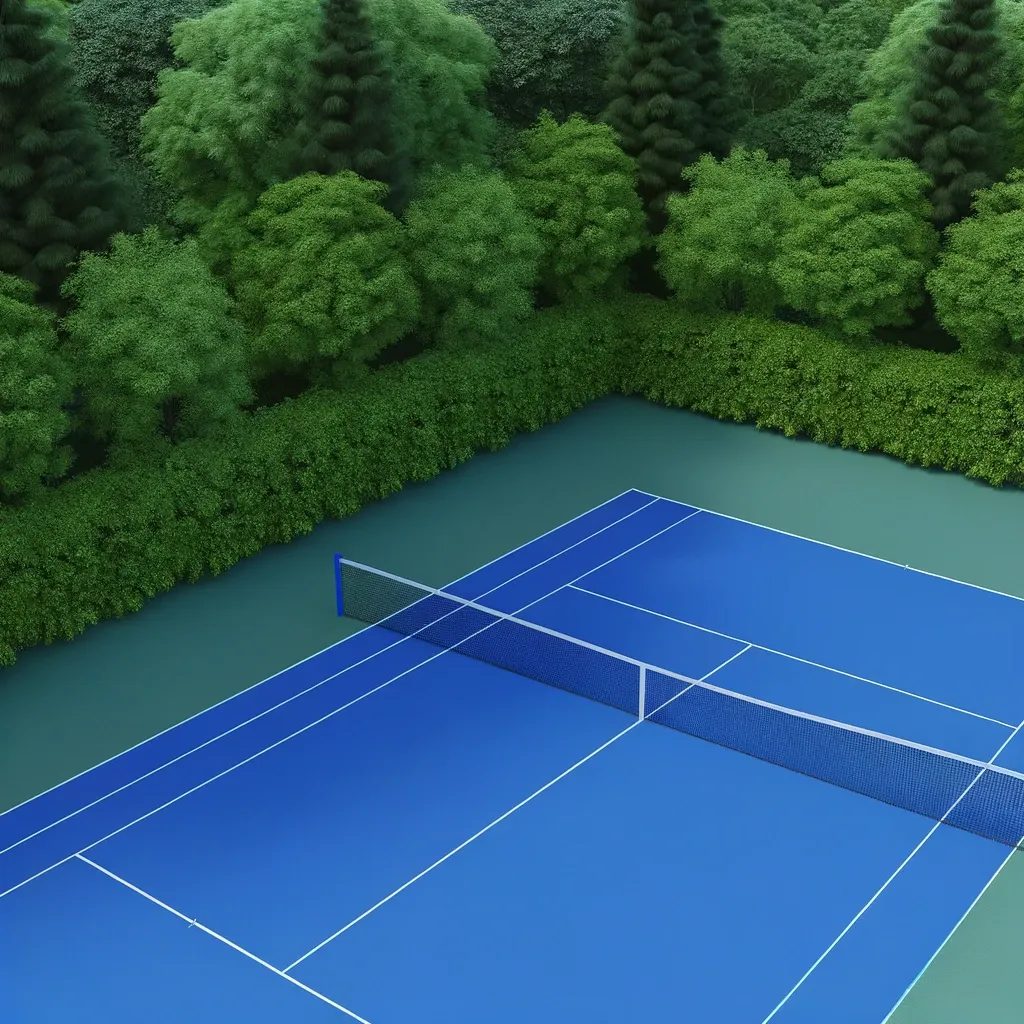As the focus on sustainability intensifies, the construction of sports courts is also evolving. Traditional materials are being replaced by innovative, eco-friendly alternatives that promise not only environmental benefits but also enhanced performance and durability. This article explores the forefront of sustainable sports court construction, highlighting key materials and practices that align with green construction principles.
The Rise of Eco-Friendly Materials in Sports Court Construction
Sustainable sports court construction is not just about reducing environmental impact; it’s also about building with the future in mind. The use of eco-friendly materials such as recycled rubber, cork, and composite wood has gained popularity. These materials are sourced from responsible suppliers and are notable for their sustainability and low carbon footprint.
Key Eco-Friendly Materials
Recycled Rubber:
This material is primarily derived from recycled vehicle tires, contributing to waste reduction. Recycled rubber surfaces are valued for their durability and water resistance, which make them suitable for various weather conditions. The material’s cushioning properties are gentle on athletes’ joints, making it an excellent choice for outdoor sports courts such as basketball and tennis. Additionally, the versatility of recycled rubber allows for customization in color and texture, enhancing aesthetic appeal while maintaining functionality.
Cork:
Cork is an exceptionally sustainable material due to its renewable nature. It is harvested from the bark of the cork oak tree, which regenerates over time, ensuring that no trees are cut down during the process. Cork provides superior shock absorption, which can reduce fatigue and injury risks for athletes. Its natural antimicrobial properties also prevent the growth of mold and mildew, making cork an ideal choice for indoor sports facilities where air quality is a concern. Beyond sports courts, cork can be used in wall coverings and flooring, providing additional insulation and noise reduction.
Composite Woods:
Composite woods are created from a blend of recycled wood fibers and plastics, which help reduce the demand for virgin timber and decrease plastic waste. These materials mimic the natural appearance of wood but offer enhanced durability and resistance to environmental factors such as moisture, rot, and insect damage. This makes them perfect for outdoor court surroundings, including seating areas and walkways. Composite woods are also available in a variety of finishes and colors, allowing for design flexibility in sports court construction.
Bamboo:
Bamboo is one of the fastest-growing plants, making it a highly sustainable material. It has a high strength-to-weight ratio, which is comparable to that of steel, and is naturally resistant to pests. Bamboo’s smooth surface is ideal for indoor sports courts, providing a hard yet elastic floor that performs well under the rigorous conditions of sports like basketball and volleyball. Bamboo flooring is not only environmentally friendly but also aesthetically pleasing, offering a warm, natural look that is increasingly popular in eco-conscious construction projects.
Recycled Plastic:
Utilizing recycled plastic in the construction of sports courts is a great way to repurpose plastic waste that would otherwise end up in landfills. This material can be used to create durable, weather-resistant surfaces that are suitable for a variety of sports applications. Recycled plastic tiles are particularly effective in outdoor settings where they contribute to reduced maintenance costs and long-term durability against the elements.
Benefits of Green Construction for Sports Courts
Adopting green construction practices for sports courts offers significant benefits, primarily in reducing the environmental impact of construction projects. Utilizing eco-friendly materials helps preserve natural resources and reduce waste. Furthermore, such materials typically exhibit enhanced durability and resistance to weather conditions, which can extend the lifespan of sports facilities significantly. This increased durability also means that the courts require less frequent maintenance and repairs, leading to reduced long-term operational costs. Additionally, the use of non-toxic and sustainable materials improves the safety and health conditions of athletes and spectators alike by minimizing exposure to harmful chemicals. Overall, green construction contributes not only to the environmental sustainability of sports facilities but also enhances their economic and functional viability, making it a smart choice in today’s construction landscape.
Challenges and Considerations
While sustainable sports court construction offers many advantages, it also presents several challenges and considerations that must be addressed:
- Higher Initial Costs: Eco-friendly materials can be more expensive upfront compared to traditional construction materials. This increase in initial investment can be a significant barrier for some projects, especially for smaller organizations or community sports facilities.
- Availability of Materials: Finding reliable suppliers of high-quality, eco-friendly materials can be challenging. The market for sustainable materials is growing but still may not be as robust as that for traditional materials. This can lead to difficulties in sourcing the right materials that meet both sustainability and performance standards.
- Performance Standards Compliance: Sports courts have specific performance requirements, such as surface hardness, bounce consistency, and durability. Ensuring that eco-friendly materials can meet these stringent standards is crucial. Sometimes, sustainable materials might not perform on par with conventional choices, requiring additional research and development.
- Long-Term Durability Concerns: While many eco-friendly materials are praised for their durability, some may have different long-term performance profiles compared to traditional materials. Understanding and mitigating these differences is crucial to ensure the longevity of the sports facility.
- Regulatory and Certification Challenges: Complying with building codes and obtaining necessary certifications for green construction materials can be complex. The regulatory environment may not always be well adapted to innovative, sustainable materials, posing additional hurdles for builders and developers.
In navigating these challenges and considerations, it’s important to remember that Home Court Advantage is more than capable of handling them. Choosing Home Court Advantage will help you build sports facilities that not only support athletics but also benefit the environment and the community.
Future Trends in Sustainable Sports Court Construction
Sustainable sports court construction represents a pivotal shift towards environmental responsibility in the sports industry. By choosing eco-friendly materials and practices, builders and facility managers contribute significantly to the preservation of our planet. This approach not only benefits the environment but also enhances the functionality and cost-efficiency of sports courts. Home Court Advantage is at the forefront of integrating these sustainable practices into sports facility construction. We encourage sports facility managers and builders to consider the long-term benefits of sustainable construction and to explore the options available for making their next project greener. Visit Home Court Advantage to learn more about sustainable sports court construction and how we can help you build a sports facility that is both eco-friendly and high-performing. Embrace the future of sports with us—where sustainability meets excellence.











